Filter by
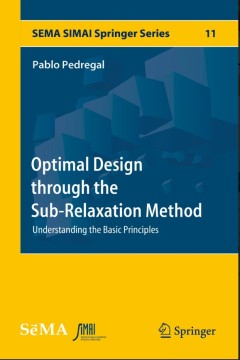
Optimal Design through the Sub-Relaxation Method
This book provides a comprehensive guide to analyzing and solving optimal design problems in continuous media by means of the so-called sub-relaxation method. Though the underlying ideas are borrowed from other, more classical approaches, here they are used and organized in a novel way, yielding a distinct perspective on how to approach this kind of optimization problems. Starting with a discus…
- Edition
- 1
- ISBN/ISSN
- 978-3-319-41158-3
- Collation
- XI, 130
- Series Title
- SEMA SIMAI Springer Series
- Call Number
- -

Modeling in Biopharmaceutics, Pharmacokinetics and Pharmacodynamics
The state of the art in Biopharmaceutics, Pharmacokinetics, and Pharmacodynamics Modeling is presented in this new second edition book. It shows how advanced physical and mathematical methods can expand classical models in order to cover heterogeneous drug-biological processes and therapeutic effects in the body. The book is divided into four parts; the first deals with the fundamental princ…
- Edition
- 2
- ISBN/ISSN
- 978-3-319-27596-3
- Collation
- XXII, 483
- Series Title
- Interdisciplinary Applied Mathematics
- Call Number
- -
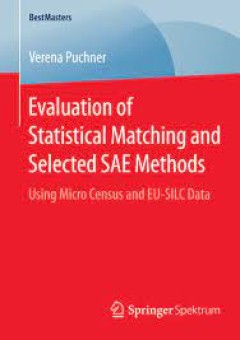
Evaluation of Statistical Matching and Selected SAE Methods Using Micro Cens…
Verena Puchner evaluates and compares statistical matching and selected SAE methods. Due to the fact that poverty estimation at regional level based on EU-SILC samples is not of adequate accuracy, the quality of the estimations should be improved by additionally incorporating micro census data. The aim is to find the best method for the estimation of poverty in terms of small bias and small var…
- Edition
- -
- ISBN/ISSN
- 978-3-658-08224-6
- Collation
- 6 b/w illustrations
- Series Title
- -
- Call Number
- -
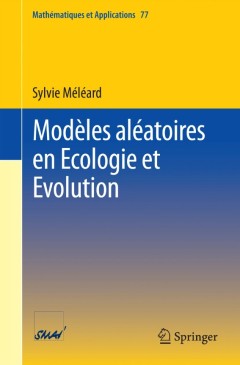
Modèles aléatoires en Ecologie et Evolution
Le but du livre est de définir et développer une grande gamme d'outils probabilistes pour la modélisation en biologie des populations, afin de décrire des dynamiques temporelles de quantités biologiques telles que la taille d'une ou plusieurs populations, la proportion d'un allèle dans une population ou la position d'un individu. En partant de modèles markoviens discrets (marches alé…
- Edition
- 1
- ISBN/ISSN
- 978-3-662-49454-7
- Collation
- XII, 267
- Series Title
- Mathématiques et Applications
- Call Number
- -
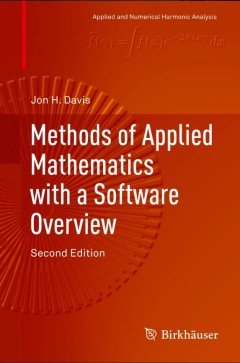
Methods of Applied Mathematics with a Software Overview
This textbook, now in its second edition, provides students with a firm grasp of the fundamental notions and techniques of applied mathematics as well as the software skills to implement them. The text emphasizes the computational aspects of problem solving as well as the limitations and implicit assumptions inherent in the formal methods. Readers are also given a sense of the wide variety of p…
- Edition
- 2
- ISBN/ISSN
- 978-3-319-43369-1
- Collation
- XVII, 781
- Series Title
- Applied and Numerical Harmonic Analysis
- Call Number
- -
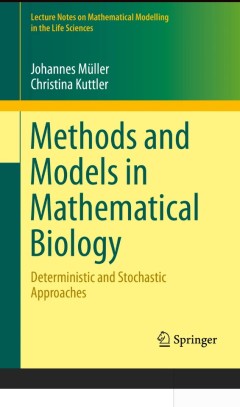
Methods and Models in Mathematical Biology
This book developed from classes in mathematical biology taught by the authors over several years at the Technische Universität München. The main themes are modeling principles, mathematical principles for the analysis of these models and model-based analysis of data. The key topics of modern biomathematics are covered: ecology, epidemiology, biochemistry, regulatory networks, neuronal networ…
- Edition
- 1
- ISBN/ISSN
- 978-3-642-27250-9
- Collation
- XIII, 711
- Series Title
- Lecture Notes on Mathematical Modelling in the Life Sciences
- Call Number
- -

Ernst Zermelo An Approach to His Life and Work
This biography sheds light on all facets of the life and the achievements of Ernst Zermelo (1871-1953). Zermelo is best-known for the statement of the axiom of choice and his axiomatization of set theory. However, he also worked in applied mathematics and mathematical physics. His dissertation, for example, promoted the calculus of variations, and he created the pivotal method in the theory of …
- Edition
- -
- ISBN/ISSN
- 978-3-662-47997-1
- Collation
- 43 b/w illustrations
- Series Title
- -
- Call Number
- -
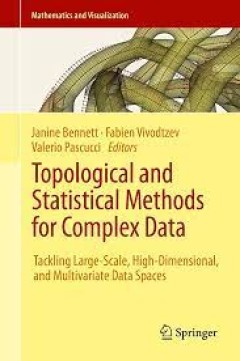
Topological and Statistical Methods for Complex Data
This book contains papers presented at the Workshop on the Analysis of Large-scale, High-Dimensional, and Multi-Variate Data Using Topology and Statistics, held in Le Barp, France, June 2013. It features the work of some of the most prominent and recognized leaders in the field who examine challenges as well as detail solutions to the analysis of extreme scale data. The book presents new metho…
- Edition
- 1
- ISBN/ISSN
- 978-3-662-44900-4
- Collation
- XV, 297
- Series Title
- Mathematics and Visualization
- Call Number
- -
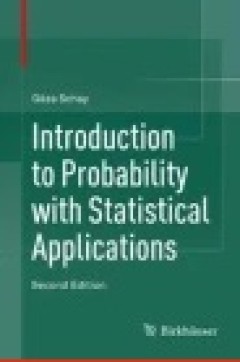
Introduction to Probability with Statistical Applications
Now in its second edition, this textbook serves as an introduction to probability and statistics for non-mathematics majors who do not need the exhaustive detail and mathematical depth provided in more comprehensive treatments of the subject. The presentation covers the mathematical laws of random phenomena, including discrete and continuous random variables, expectation and variance, and commo…
- Edition
- -
- ISBN/ISSN
- 978-3-319-30620-9
- Collation
- -
- Series Title
- -
- Call Number
- -

A Textbook on Ordinary Differential Equations
This book offers readers a primer on the theory and applications of Ordinary Differential Equations. The style used is simple, yet thorough and rigorous. Each chapter ends with a broad set of exercises that range from the routine to the more challenging and thought-provoking. Solutions to selected exercises can be found at the end of the book. The book contains many interesting examples on topi…
- Edition
- Ed. 2
- ISBN/ISSN
- 978-3-319-16408-3
- Collation
- XIV, 331
- Series Title
- UNITEXT
- Call Number
- 515.3 AHM t
 Computer Science, Information & General Works
Computer Science, Information & General Works  Philosophy & Psychology
Philosophy & Psychology  Religion
Religion  Social Sciences
Social Sciences  Language
Language  Pure Science
Pure Science  Applied Sciences
Applied Sciences  Art & Recreation
Art & Recreation  Literature
Literature  History & Geography
History & Geography